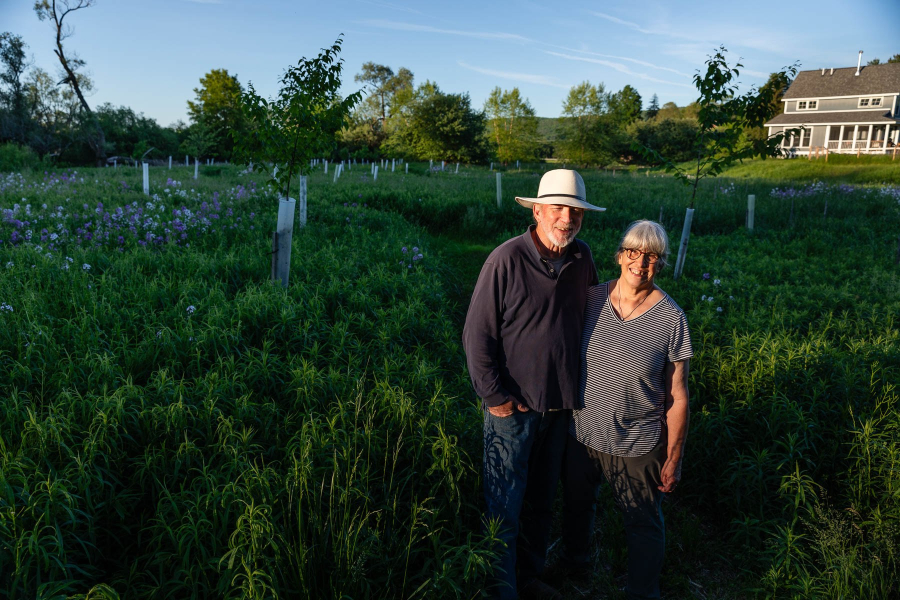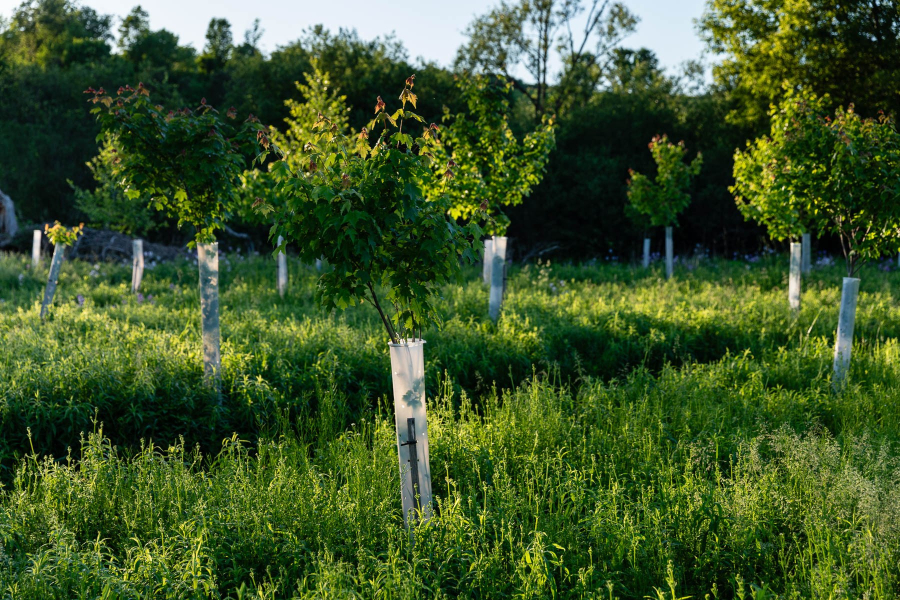New York landowners reforest the banks of the Upper Susquehanna River
A free tree planting program helps the state work toward its Forest Buffer goals

They say it helps to have a project to dedicate yourself to in retirement, and for Kathleen and Timothy Peters, it’s the hundreds of trees and shrubs growing on their 22-acre property in Otsego County, New York.
What Kathleen refers to as her “baby forest” has been growing mostly since 2016, when the couple was accepted into the Upper Susquehanna Coalition’s (USC) Trees for Tributaries program. Funded by the New York Department of Environmental Conservation, the program provides free tree planting and maintenance on properties that are within close proximity to a stream, river or lake.
“They planted something like 300 trees and smaller shrubs at no cost to us,” said Kathleen, who along with her husband is a self-described nature lover. “Even better, they came back and replanted when we lost some of those [trees] to critters, flooding and storms.”
Before partnering with USC, the Peters tried reforesting the property themselves, which had long ago been cleared for agriculture. “But that gets expensive,” said Kathleen, “especially when we lost a few that we paid good money for.” About 10 years after buying the property in 2005, the couple put the land into a conservation easement through the Otsego Land Trust. And it was the Trust who recommended they reach out to USC.
Today, the Peters continue to work with USC on nurturing the trees and shrubs. Kathleen has seen all sorts of wildlife visiting the property, along with “every type of bird you can imagine” that visits their part of the country. For USC, the incentive is to protect Herkimer Creek, which runs along the Peters’ property and is part of the larger Susquehanna River watershed.

Trees planted near streams and rivers, known as riparian buffers or forest buffers, are critical to restorting the Susquehanna River and Chesapeake Bay. Forest buffers protect stream banks from erosion, reduce flooding, soak up nutrient pollution coming off the land and improve habitat for fish and other organisms. Buffers planted in far corners of the Bay watershed still improve water quality downstream, while providing better habitat for fish moving throughout the region.
Through its Trees for Tributaries program, USC has worked with several hundred landowners, just like the Peters, within the Upper Susquehanna River and Chemung River watersheds, both of which drain to the Chesapeake Bay. According to the organization’s Forest Buffer team, they have planted 57,111 trees through the program since 2016, with 10,000 planted in 2023. Going forward, they plan on planting a minimum of 10,000 trees and shrubs each year.
Programs like these are what help achieve state-wide goals for tree plantings and clean water.
New York, along with the other six jurisdictions in the Bay watershed, have committed to restoring 900 miles of riparian forest buffers within the watershed per year through the Chesapeake Bay Watershed Agreement. Between 2010 and 2021, New York planted roughly 220 miles of forest buffers. However, as a whole, the jurisdictions are behind on the Forest Buffers Outcome.
According to the Chesapeake Bay Program’s Forestry Workgroup, the partnership will need sustained investment in flexible programs that make it easy for landowners to plant forest buffers. For couples like Kathleen and Timothy Peters, planting buffers can be a no-brainer, but it can be a more difficult decision for farmers who need the land for planting crops and animal grazing.
Through organizations like the Upper Susquehanna Coalition, progress is being made to reforest the land along streams and rivers in the Bay watershed.
If you are a New York landowner interested in planting your own buffer, the Trees for Tributaries program will be accepting applications for its spring season until April 12, 2024. Landowners living outside of New York can visit the website Chesapeake Forest Buffers to learn about all sorts of similar programs.
Have you planted any buffers on your property? Let us know in the comments!

Comments
There are no comments.
Thank you!
Your comment has been received. Before it can be published, the comment will be reviewed by our team to ensure it adheres with our rules of engagement.
Back to recent stories